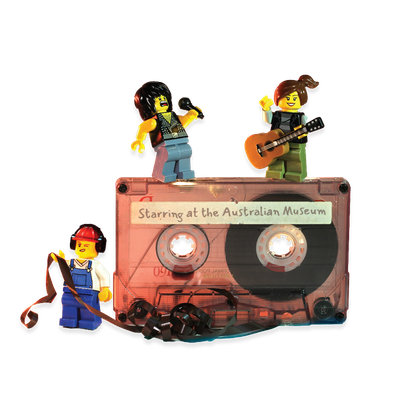Your search returned 2817 results
By Page Type
By Tag
- fish (966)
- blog (696)
- fishes of sydney harbour (401)
- First Nations (297)
- Blog (236)
- AMRI (169)
- archives (164)
- Eureka Prizes (145)
- Aboriginal and Torres Strait Islander (135)
- insect (126)
- Ichthyology (124)
- geoscience (109)
- minerals (102)
- climate change (99)
- podcast (94)
- Fish (91)
- Anthropology (89)
- International collections (80)
- Minerals Gallery (78)
- wildlife of sydney (78)
- Labridae (77)
- frog (73)
- gemstone (70)
- photography (65)
- history (63)
- Mollusca (60)
- gem (59)
- staff (59)
- Birds (56)
- Gems (56)
- Indonesia (56)
- education (55)
- shark (55)
- AMplify (54)
- people (53)
- earth sciences (50)
- past exhibitions (50)
- exhibition (49)
- Gobiidae (48)
- sustainability (46)
- Pomacentridae (45)
- Serranidae (44)
- lifelong learning (42)
- science (42)
- Earth and Environmental Science (41)
- Syngnathidae (41)
- Ancient Egypt (40)
- Bali (40)
- bird (40)
- dangerous australians (40)
-
Ardipithecus kadabba
https://australian.museum/learn/science/human-evolution/ardipithecus-kadabba/This early hominin lived over 5 million years ago in East Africa.
-
Ardipithecus ramidus
https://australian.museum/learn/science/human-evolution/ardipithecus-ramidus/Discovered in the 1990s, this is one of the earliest of our hominin ancestors yet discovered.
-
When and where did our species originate?
https://australian.museum/learn/science/human-evolution/when-and-where-did-our-species-originate/Our species, Homo sapiens, has now spread to all parts of the world but it's generally believed that we originated in Africa by about 200,000 years ago. We interacted with local archaic human populations as we colonised the globe.
-
How do we affect our evolution?
https://australian.museum/learn/science/human-evolution/how-do-we-affect-our-evolution/We are the only living things that have the ability to counter the forces of evolution. In the past, our ancestors relied on genetic adaptations for survival. Today, technology, rather than biology, has become the key to our survival as a species.
-
How do we know if they could speak?
https://australian.museum/learn/science/human-evolution/how-do-we-know-if-they-could-speak/All animals communicate. However, only humans communicate through language, which can be written, spoken or signed. The enormous benefits of language have allowed us to teach others, pass on our culture, discuss the past and future, and promote social relationships.
-
Shorter jaws with smaller teeth
https://australian.museum/learn/science/human-evolution/shorter-jaws-with-smaller-teeth/As our ancestors evolved, their jaws and teeth changed in many ways. Some tooth changes were apparent five million years ago and additional changes have occurred since then.
-
Walking on two legs – bipedalism
https://australian.museum/learn/science/human-evolution/walking-on-two-legs-bipedalism/Our bipedal body structure is unique amongst living apes. In fact, our ancestors started on the path to becoming human when they began walking on two legs.
-
Hominid and hominin – what’s the difference?
https://australian.museum/learn/science/human-evolution/hominid-and-hominin-whats-the-difference/Current use of the term ‘hominid’ can be confusing because the definition of this word has changed over time.
-
We are humans
https://australian.museum/learn/science/human-evolution/we-are-humans/Humans are members of a sub-group of the Great Apes known as the hominins (Tribe Hominini).
-
Humans are primates
https://australian.museum/learn/science/human-evolution/humans-are-primates/Humans are members of a particular sub-group of mammals known as the primates (Order Primates).
-
Discover more
2025 Australian Geographic Nature Photographer of the Year
Special exhibition
Now open -
Discover more
Unfinished Business
Special exhibition
Now open -
Discover more
Wansolmoana
Permanent exhibition
Open daily -
Find out more
Burra
Permanent kids learning space
10am - 4.30pm![]()
-
Discover more
Minerals
Permanent exhibition
Open daily![]()




